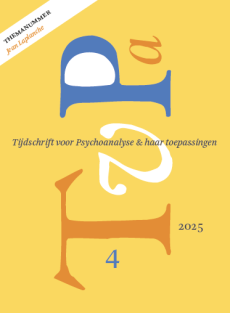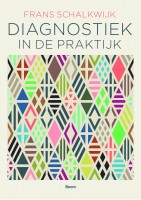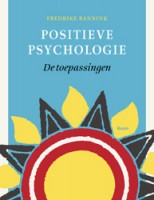Honderd jaar Studien über Hysterie
Summary
Hysteria is considered against the background of Freud’s Studies on Hysteria, 1895 (IV ‘The Psychotherapy of Hysteria’). Taking into account the scale of the changes and refinements that have taken place in psychiatric and psychoanalytic diagnosis since Freud, this study concludes that the hysterical type of personality does occur in daily practice and can be better understood with the help of the considerable body of clinical experience gathered in the last hundred years than without it.
Literatuur
- Bell, D. (1992), Hysteria, a contemporary Kleinian perspective. British Journal of Psychotherapy, 9, p. 169-180.
- Blacker, K.H., en J.P. Tupin (1977), Hysteria and hysterical structures: Developmental and social theories. In: M. Horowitz (red.), Hysterical personality. Jason Aronson, New York.
- Blacker, K.H., en J.P. Tupin (1991), Hysteria and hysterical structures: Developmental and social theories. In: M. Horowitz (red.), Hysterical Personality style and the histrionic personality disorder. Jason Aronson, Northvale/New Jersey/London.
- Blass, R.B. (1992), Did Dora have an Oedipus complex? Psychoanalytic Study of the Child, 47, p. 159-188.
- Blass, R.B., en B. Simon (1992), Freud on his own mistakes: the role of seduction in the etiology of neurosis. In: J.H. Smith en H. Morris, Telling facts: History and narration in psychoanalysis. Johns Hopkins University Press, Baltimore/London, p. 161-183.
- Blass, R.B., en B. Simon (1994), The value of the historical perspective to contemporary psychoanalysis. Freud’s seduction hypothesis. International Journal of Psycho-Analysis, 75, p. 677-694.
- Brenman, E. (1985), Hysteria. International Journal of Psycho-Analysis, 66, p. 423-432.
- Brenner, I. (1994), The dissociative character. Journal of the American Psychoanalytic Association, 42 (3), p. 819-846.
- Breuer, J., en S. Freud (1893), Über den psychischen Mechanismus hysterischer Phänomene. Gesammelte Werke, Nachtragsband. S. Fischer, Frankfurt, p. 181-195.
- Breuer, J., en S. Freud (1895a), Studien über Hysterie. Deuticke, Leipzig/Wien.
- Breuer, J., en S. Freud (1895b), Studien über Hysterie. Gesammelte Werke I, p. 75-312.
- Charcot, J.M. (1886), Neue Vorlesungen über die Krankheiten des Nervensystems, insbesondere über Hysterie, vertaling S. Freud. Toeplitz & Deuticke, Leipzig/Wien.
- Crews, F. (1993), (1994), (1995), The unknown Freud. New York Review of Books, Nov. 18, met name p. 61-66; voortzetting van de discussie in de NYRB 1994, Feb. 3, p. 34-43, Dec. 1, p. 49-57 en Jan. 12, 1995, p. 42-47.
- Decker, H.S. (1991), Freud, Dora, and Vienna 1900. The Free Press, Macmillan, New York.
- Donnet, J.-L. (1986), Sur la rencontre de l’hystérique et de la situation analytique. Revue Française de Psychanalyse, 50 (3), p. 871-890.
- DSM-IV (1994): Diagnostic and statistical manual of mental disorders, fourth edition. Washington D.C.: American Psychiatric Association.
- Ellenberger, H.F. (1970), The Discovery of the unconscious. The history and evolution of dynamic psychiatry. Basic Books, New York.
- Fain, M., en F. Bégoin-Guignard (1984), Identification hystérique et identification projective. Revue Française de Psychanalyse, 48 (2), p. 515-527.
- Fairbairn, W.R.D. (1954), Observations on the nature of hysteria. Journal of Medical Psychology, 27, p. 105-125.
- Fenichel, O. (1946), The psychoanalytic theory of neurosis. Routledge & Kegan Paul (1955), London.
- Foucault, M. (1961), Histoire de la folie. Plon, Paris.
- Freud, S. (1894), Die Abwehr-Neuropsychosen, Gesammelte Werke I. S. Fischer, Frankfurt, p. 57-75.
- Freud, S. (1896), Weitere Bemerkungen über die Abwehrneuropsychosen. Gesammelte Werke I, p. 377-405.
- Freud, S. (1905), Bruchstück einer Hysterie-Analyse. Gesammelte Werke V, p. 161-286.
- Freud, S. (1908), Hysterische Phantasien und ihre Beziehung zur Bisexualität, Gesammelte Werke VII, p. 191-202.
- Freud, S. (1909a), Allgemeines über den Hysterischen Anfall. Gesammelte Werke VII, p. 235-242.
- Freud, S. (1909b), Analyse der Phobie eines Fünfjährigen Knaben. Gesammelte Werke VII, p. 243-380.
- Freud, S. (1931), Die weibliche Sexualität. Gesammelte Werke XIV, p. 515-539.
- Gay, P. (1988), Freud, a life of our time. J.M. Dent & Sons, London/Melbourne.
- Gilman, S.L., H. King, R. Porter e.a. (1993), Hysteria beyond Freud. University of California Press, London/Melbourne.
- Gödde, G. (1994), Charcot’s neurologische Hysterietheorie. Vom Aufstieg und Niedergang eines wissenschaftlichen Paradigmas. Lucifer-Amor, Zeitschrift zur Geschichte der Psychoanalyse. Geschichte der Hysterie, 7, p. 7-51.
- Grotstein, J.S. (1992), Reflections on a century of Freud: some paths not chosen. British Journal of Psychotherapy, 9 (1), 181-187.
- Halberstadt-Freud, H.C. (1991), Freud, Proust, perversion and love. Swets & Zeitlinger, Amsterdam/Berwyn PA.
- Halberstadt-Freud, H.C. (1993), Een wordingsgeschiedenis: Van moeder tot vrouw, In: P. van der Zwaal (red.), De middelbare leeftijd. Boom, Meppel, p. 122-145.
- Hirschmüller, A. (1989), Josef Breuer. New York University Press, London/New York.
- Hof, S. van ’t (1994), Anorexia nervosa: the historical and cultural specificity, fallacious theories and tenacious facts. Swets & Zeitlinger, Lisse.
- Horowitz, M. (red.) (1991), Hysterical personality style and the histrionic personality disorder. Jason Aronson, Northvale/New Jersey/London.
- Israëls, H. (1993), Het geval Freud. Bert Bakker, Amsterdam.
- James, W. (1890), The Principles of Psychology. Dover Publications, New York.
- Jeanneau, A. (1985), L’Hystérie unité et diversité. Revue Française de Psychanalyse, 49 (1), p. 107-326.
- Khan, M.M.R. (1975), Grudge and the hysteric. International Journal of Psychoanalytic Psychotherapy, 4, p. 349-357.
- Kernberg, O. (1975), Borderline conditions and pathological narcissism. Jason Aronson, New York.
- Kernberg, O. (1976), Object relations theory and clinical psychoanalysis. Jason Aronson, New York.
- Kris, E. (1954), The origins of psychoanalysis. Basic Books, New York.
- Kuiper, P.C. (1976), De mens en zijn verhaal. Athenaeum-Polak & Van Gennep, Amsterdam.
- Laplanche, J. (1974), (Reporter) Panel on ‘hysteria today’. International Journal of Psycho-Analysis, 55, p. 459-470.
- Lebovici, S. (1979), L’expérience du psychanalyste chez l’enfant et chez l’adulte. Devant la modèle de la névrose infantile et de la névrose de transfert. Presses Universitaires de France, Paris.
- Le Coultre, R. (1966), Splijting van het Ik als centraal neuroseverschijnsel. In: Psychoanalytische thema’s en variaties. Van Loghum Slaterus, Deventer, p. 105-123.
- Livingstone Smith, D. (1992), On the eve of a revolution: Freud’s concepts of consciousness and unconsciousness in ‘Studies on hysteria’ and the ‘Project for a scientific psychology’. British Journal of Psychotherapy, 9, p. 150-156.
- Loftus, E.F. (1993), The reality of repressed memories. American Psychologist, 48, p. 518-537.
- Masson, J.M. (1984), The assault on truth. Farrar, Strauss and Giroux, New York.
- Masson, J.M. (vert. en red.) (1985), The complete letters of Sigmund Freud to Wilhelm Fliess, 1887-1904. Harvard University Press, Cambridge/London.
- Mentzos, S. (1993), Hysterie. Zur Psychodynamik unbewusster Inszenierungen. Fischer, Frankfurt.
- Mijolla, A. de (1986), Du prudent usage des notions d’‘hystérie’ et d’‘hystérique’ en psych-analyse. Revue Française de Psychanalyse, 50, p. 892-904.
- Miller, A. (1981), Du sollst nicht merken. Suhrkamp, Frankfurt a.M.
- Ody, M. (1986), De l’opposition entre hysterie et dépression. Revue Francaise de Psychanalyse, 50, p. 905-922.
- Rangell, L. (1959), The nature of conversion. Journal of the American Psychoanalytic Association, 7, p.632-662.
- Reich, W. (1949), Character Analysis. The Noonday Press, Farrar Strauss and Cudahy, New York (1961).
- Schaeffer, J. (1986), Le rubis a horreur du rouge. Revue Française de Psychanalyse, 50, p. 923-944.
- Schimek, J. (1987), Fact and fantasy in the seduction theory: A historical review. Journal of the American Psychoanalytic Association, 35, p. 937-966.
- Shapiro, D. (1965), Neurotic Styles. Basic Books, New York.
- Simon, B. (1991), Is the Oedipus Complex still the cornerstone of psychoanalysis? Journal of the American Psychoanalytic Association, 39, p. 641-668.
- Simon, B. (1992), ‘Incest – see under Oedipus Complex’: The history of an error in psychoanalysis. Journal of the American Psychoanalytic Association, 40, p. 955-988.
- Simon, B., en R. Blass (1991), The Oedipus Complex. In: J. Neu (red.): The Cambridge Companion to Freud. Cambridge University Press, Cambridge (Engeland), p. 161-174.
- Sperling, M. (1973), Conversion hysteria and conversion symptoms: a revision of classification and concepts. Journal of the American Psychoanalytic Association, 21, p. 745-72.
- Stein, C. (1986), Souvenirs ou réminiscences. Revue Française de Psychanalyse, 50, p. 1009-1012.
- Stekel, W. (1908), Nervöse Angstzustände und ihre Behandlung. Verlag Urban & Schwarzenberg, Berlin/Wien (Eerste Duitse editie met een voorwoord van S. Freud); Engelse uitgave 1950: Conditions of nervous anxiety and their treatment. Routledge & Kegan Paul, London.
- Storr, A. (1995), The myth of repressed memory. False memories and allegations of sexual abuse. International Herald Tribune, January 23, p. 7.
- Veith, I. (1965), The history of a disease. University of Chicago Press, Chicago.
- Wind, E. de (1984), Some implications of former massive traumatization upon the actual analytic process. International Journal of Psycho-Analysis, 65, p. 273-281.
- Wisdom, J.O. (1961), A methodological approach to the problem of hysteria. International Journal of Psycho-Analysis, 42, p. 224-237.
- Zetzel, E. (1968), The so called good hysteric. International Journal of Psycho-Analysis, 49, p. 256-260.
 © 2009-2025 Uitgeverij Boom Amsterdam
© 2009-2025 Uitgeverij Boom Amsterdam
ISSN 1382-516x
De artikelen uit de (online)tijdschriften van Uitgeverij Boom zijn auteursrechtelijk beschermd. U kunt er natuurlijk uit citeren (voorzien van een bronvermelding) maar voor reproductie in welke vorm dan ook moet toestemming aan de uitgever worden gevraagd:
Behoudens de in of krachtens de Auteurswet van 1912 gestelde uitzonderingen mag niets uit deze uitgave worden verveelvoudigd, opgeslagen in een geautomatiseerd gegevensbestand, of openbaar gemaakt, in enige vorm of op enige wijze, hetzij elektronisch, mechanisch door fotokopieën, opnamen of enig andere manier, zonder voorafgaande schriftelijke toestemming van de uitgever.
Voor zover het maken van kopieën uit deze uitgave is toegestaan op grond van artikelen 16h t/m 16m Auteurswet 1912 jo. Besluit van 27 november 2002, Stb 575, dient men de daarvoor wettelijk verschuldigde vergoeding te voldoen aan de Stichting Reprorecht te Hoofddorp (postbus 3060, 2130 KB, www.reprorecht.nl) of contact op te nemen met de uitgever voor het treffen van een rechtstreekse regeling in de zin van art. 16l, vijfde lid, Auteurswet 1912.
Voor het overnemen van gedeelte(n) uit deze uitgave in bloemlezingen, readers en andere compilatiewerken (artikel 16, Auteurswet 1912) kan men zich wenden tot de Stichting PRO (Stichting Publicatie- en Reproductierechten, postbus 3060, 2130 KB Hoofddorp, www.cedar.nl/pro).
No part of this book may be reproduced in any way whatsoever without the written permission of the publisher.
Nieuwsbrief Boom Psychologie
Meld u nu aan en ontvang maandelijks de Boom Psychologie nieuwsbrief met aantrekkelijke aanbiedingen en de nieuwe uitgaven.
Aanmelden


